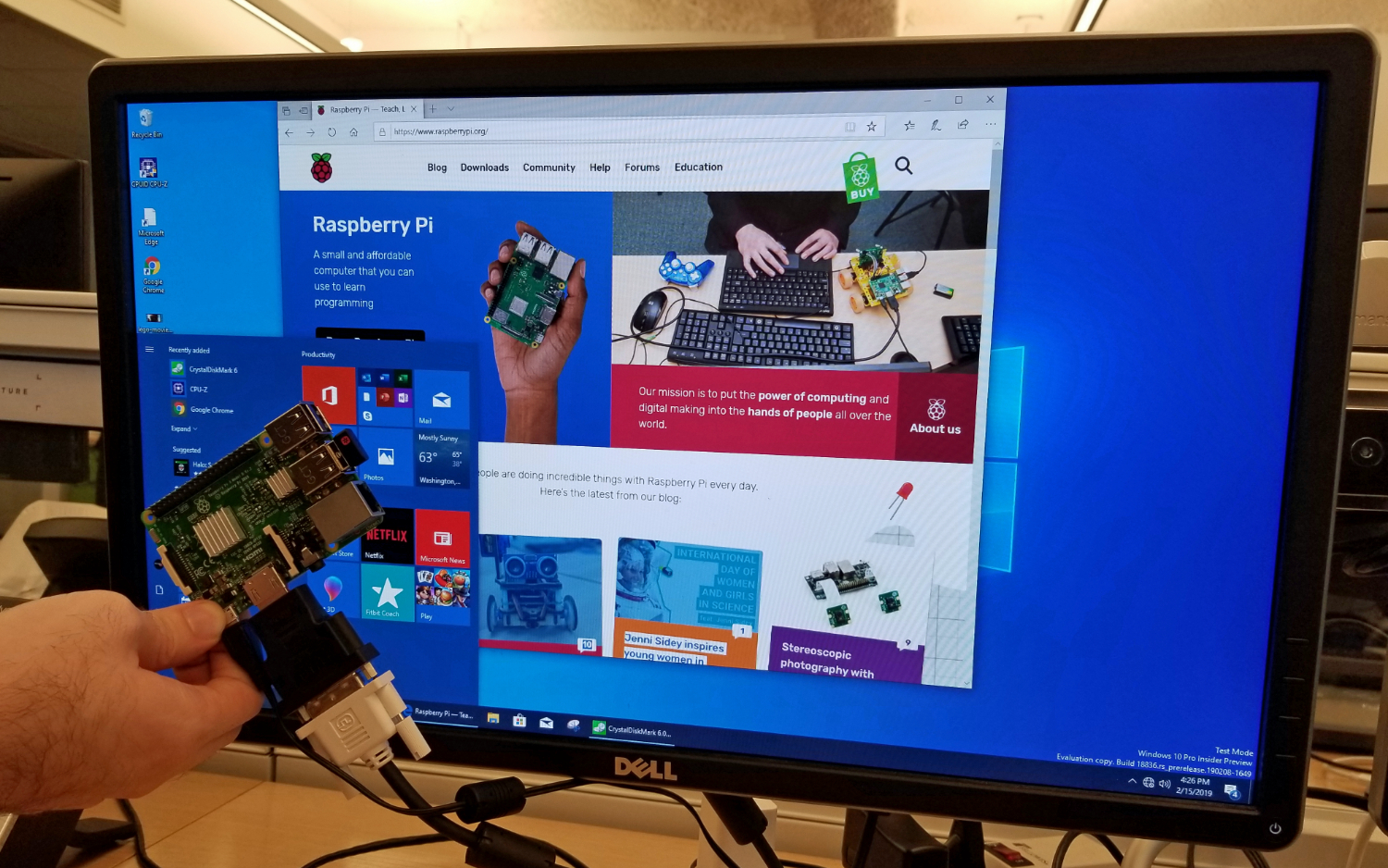

- #Windows 10 iot raspberry pi 3 how to#
- #Windows 10 iot raspberry pi 3 install#
- #Windows 10 iot raspberry pi 3 for windows 10#
- #Windows 10 iot raspberry pi 3 windows 10#
- #Windows 10 iot raspberry pi 3 password#
I’ve read a few reports online of people saying installations failed because the Pi 3 wasn’t getting enough power. You’ll possibly need to be able to supply the board with 5v and at least 1.0A through a micro USB connection. There were times when the installation process failed, and after only one change of connecting the ethernet cable between my router and Pi 3, the installation worked. But I found a hard-wired connection to be critical to getting to the end of the process. Theoretically I shouldn’t have needed this – the Pi 3 has WiFi for online installs, and if you flash the OS onto your microSD card, everything should be on there.
#Windows 10 iot raspberry pi 3 windows 10#
For a Windows 10 IoT install, I needed to be able to directly connect my Pi to an ethernet port.
#Windows 10 iot raspberry pi 3 password#
If you’re installing by downloading from the internet, you’ll need to enter your Windows Insider username and password – if you’re installing from an image flashed onto your microSD card, you’ll still need to configure your Pi 3’s language settings.Īnd life is a lot easier if you have a USB mouse as well.
#Windows 10 iot raspberry pi 3 install#
I think it’s practically impossible to install the Windows IoT OS without having some form of visual feedback. You need a display device with an HDMI port (and obviously an HDMI cable to connect the display device and the Pi 3). There’s an application called guiformat which allows you to format a 64GB microSD card as FAT32 – however, I wasn’t able to get Windows 10 to run on the Pi 3 from a 64GB card, so this really is just background information. There is an official “ SDFormatter” application, which I found worked for none of my cards (and ultimately this application proved irrelevant – I was able to use the built in Windows disk formatter to make things work on the 8GB and 16GB cards). The Pi 3’s bootloader only has support for reading from FAT filesystems.
#Windows 10 iot raspberry pi 3 for windows 10#
For Windows 10 to run on the Pi 3, you must format your card as FAT32 – it won’t work if it’s formatted as NTFS, or exFAT. I’ll go into a bit more detail about my experiences with these cards later in the post. Of course, I’m not saying that the first two cannot work – there might be a step that I’ve missed – it’s just that they didn’t work for me.

Last things – apologies for the poor quality photos throughout this post – I couldn’t take screenshots from my TV set so had to photograph the relevant screens.

Additionally, the items I discuss here might not be relevant for setting up the Pi 3 with operating systems other than Windows. Getting Windows 10 to work with the Raspberry Pi 2 could be a very different process – I don’t have a Pi 2 so I haven’t experimented.
#Windows 10 iot raspberry pi 3 how to#
Remember that I’m describing how to get started with the Pi 3 with Windows 10 IoT Core. Expert Raspberry Pi users might look at some of the things I’ve done here and say they’re unnecessary – this might be correct, but rightly or wrongly these were the steps I followed to get to a working install. So I’ve written this post to include all the mistakes I made, as well as the things I learned. That said, once I worked out a process, I found it easy to install Windows 10 onto the Pi 3 (and got WiFi working too). This wasn’t my experience (and judging from forums and newsgroups, I’m not alone) and I hate admitting defeat. Since purchasing my Raspberry Pi 3, I’ve followed instructions on how to install Windows 10 from online guides, and watched a few installation guides on YouTube – each time, the installation was reported as very straightforward. Since I’ve started to become interested in Windows UWP apps recently, I was particularly keen to try the Raspberry Pi 3 with a Windows operating system. I’ve worked a lot with different types of Arduino before, but I’ve never worked with the Pi, so I decided to buy one to experiment. The Raspberry Pi 3 was released recently (February 2016).


 0 kommentar(er)
0 kommentar(er)
